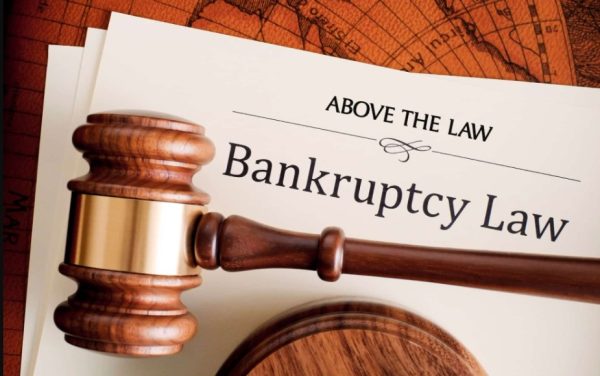Table of Contents
Navigating the complexities of corporate bankruptcy can be daunting, particularly in Vietnam. This guide from NT International Law Firm aims to demystify the process by outlining the key concepts, legal basis, and crucial differences between bankruptcy and dissolution.

Understanding Corporate Bankruptcy in Vietnam: A Comprehensive Guide
What is Corporate Bankruptcy?
Vietnamese law, as outlined in the 2014 Bankruptcy Law (Article 4), defines corporate bankruptcy as a state of legal incapacity to fulfill debt obligations within a specified timeframe, typically three months. This inability to pay, known as insolvency, can manifest in various forms, from asset depletion to chronic financial distress.
Key Points:
- Bankruptcy is a legal status, not simply financial difficulty.
- Enterprises cannot declare bankruptcy on their own; court proceedings are mandatory.
- Insolvency can manifest in various ways, such as lack of assets or critical financial distress.
Who can initiate bankruptcy proceedings?
The law empowers several entities to initiate bankruptcy proceedings, ensuring diverse perspectives and safeguarding creditor interests. These include:
- Unsecured and partially secured creditors: For those directly impacted by the company’s inability to repay debts.
- Employees and labor unions: To protect the livelihoods and rights of the workforce.
- Shareholders: With 20% or more common shares, or a smaller stake held for at least six consecutive months, ensuring representation of significant investors.
- Legal representatives and company/cooperative leadership: As responsible parties obligated to address insolvency.
Obligation to open bankruptcy proceedings:
The law also imposes an obligation to initiate bankruptcy proceedings on certain individuals. These include:
- Legal representatives or owners of companies: Depending on the business structure (sole proprietorship, LLC, etc.).
- Board of Directors Chairmen or relevant authority figures in cooperatives: To uphold transparency and accountability.
Opening vs. Not Opening Bankruptcy Proceedings:
- The Court has 30 days to decide on opening proceedings from receiving the request.
- The decision is based on thorough review of evidence proving insolvency.
- In certain cases, a pre-decision meeting may be held with relevant parties.
Activities Prohibited After Opening Proceedings:
Once bankruptcy proceedings are initiated, the company enters a distinct legal phase with specific restrictions and procedures. Key aspects include:
- Prohibition of certain activities: Hiding assets, paying unsecured debts, and relinquishing debt collection rights are strictly prohibited to safeguard creditor interests and maintain transparency.
- Appointment of a bankruptcy trustee: The court appoints a qualified individual to manage the company’s assets, oversee debt repayment, and facilitate the final resolution.
- Restructuring or liquidation: Depending on the financial situation, the company may undergo restructuring efforts or face liquidation to settle outstanding debts.

Dissolution vs. Bankruptcy: Key Differences
Dissolution vs. Bankruptcy: Key Differences:
Similarities:
- Both lead to the termination of the business entity.
- Both require revoking the company seal and Business Registration Certificate.
- Both involve fulfilling property obligations.
Differences:
| Feature | Dissolution | Bankruptcy |
|---|---|---|
| Procedure | Administrative | Judicial |
| Reasons | Varied depending on business type (voluntary, compulsory) | Solely insolvency |
| Initiation | Business owner or competent state agency | Creditors or Court |
| Asset Division | Prior to dissolution | Final step in bankruptcy proceedings |
| Outcome | Permanent termination | Possibility of business recovery and continued operations |
| Restrictions | None | Potential restrictions for managers and operators of bankrupt companies |
Conclusion:
Understanding the distinct nature and legal framework of corporate bankruptcy in Vietnam empowers businesses to approach potential financial challenges informedly. While both bankruptcy and dissolution result in business closure, recognizing the key differences and their legal implications is crucial for navigating such situations effectively.
NT International Law Firm is Here to Help
NT International Law Firm has addressed the question of what corporate bankruptcy is and how it is different from company dissolution. If you have any further questions or concerns regarding corporate law, please contact our law firm immediately for expert legal advice.
If you require any legal assistance, please feel free to reach out to us via phone at 090 252 4567 or through email: info@ntpartnerlawfirm.com. At NT INTERNATIONAL LAW FIRM, our team is committed to offering you prompt and personalized advice.
You also might be interested in:
“The article’s content refers to the regulations that were applicable at the time of its creation and is intended solely for reference purposes. To obtain accurate information, it is advisable to seek the guidance of a consulting lawyer.”

LEGAL CONSULTING SERVICES
090.252.4567NT INTERNATIONAL LAW FIRM
- Email: info@ntpartnerlawfirm.com – luatsu.toannguyen@gmail.com
- Phone: 090 252 4567
- Address: B23 Nam Long Residential Area, Phu Thuan Ward, District 7, Ho Chi Minh City, Vietnam
